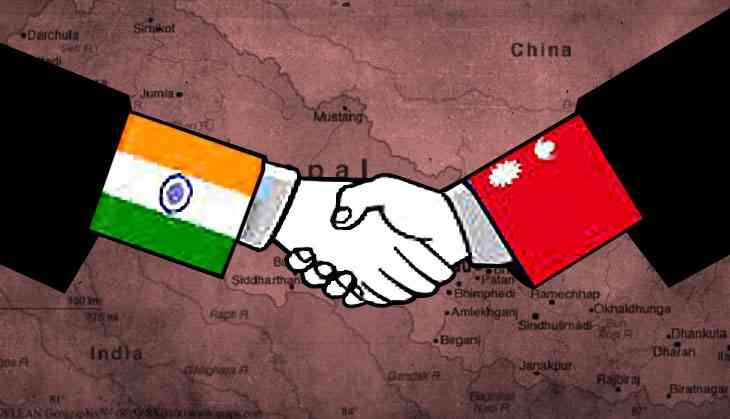The importance of an amicable relationship between Nepal for India

Nepal is a key strategic ally that India cannot afford to alienate. This relationship is especially important due to the continued Chinese encirclement of India. Hence, India should consider reviving the Gujral Doctrine, especially towards Nepal, as a way to repair the relationship.
Indo-Nepal relations took a turn for the worse in 2015 when India protested the new Constitution of Nepal and its lack of provisions for the defence of the minorities on the Indian border. As the marginalised groups rioted, the Nepali government blamed India for inciting the violence.
The situation further escalated when a blockade was instituted by the Madeshi protesters, greatly restricting the amount of petrol coming into Nepal, as well as essential supplies required to recover from the devastating earthquake that hit Nepal earlier that year. While Nepal was suffering from this crisis, India, which was the primary supplier of both fuel and supplies, refused to send more trucks into Nepal, angering the government, and more importantly, the Nepali people.
Furthermore, India also alienated a previously 'pro-India' figure, KP Sharma Oli, by actively supporting his main opponent. In 2016, India also attempted to persuade Oli's ally and the father of the Nepali communist movement, Prachanda, to join Oli's opponents, the Nepali Congress. Through these choices, India amplified the anti-India sentiment in the Nepali people, as well as the eventual ruling coalition, headed by Oli.
The faltering relationship with India has resulted in the speculation that the newly elected Left Front will be looking towards fellow 'communist', China, as its primary partner in the region. China has been attempting to encircle India for decades, and a stagnation in Indo-Nepal relations is just what it might take for Nepal to follow in the footsteps of Sri Lanka, the Maldives, and Myanmar.
While Nepal has also been looking to reduce dependency from India since the mid-1970s, it has previously always been wary of Chinese involvement in its region. However, given India's recent actions, Oli and his government might be more liberal in allowing China to invest into Nepal. China's significant fiscal advantage over India only makes the offer more tempting for Nepal.
Despite this, Nepal should realise that the aforementioned countries which allowed large-scale Chinese investments are now in extensive debt.
It is evident that New Delhi has to repair the relationship. This could be done through a recognition of Nepal's sovereignty by the Indian government. Any more harsh reactions over internal matters such as in 2015 could cause irreconcilable differences between the two nations. Nevertheless, this does not mean India has to stop fighting for the rights of the marginalised groups in Nepal. However, India should do this in a more subtle manner, that is, only giving suggestions and recognising that the final decision rests upon the Nepali government.
Nepali politicians will also have more faith in India if it respects the democratic process of Nepal, accepting whoever's in charge in Kathmandu. Refraining from endorsing a candidate will result in the perception of a neutral India, willing to pursue bilateral relations with Nepal no matter the circumstance.
This move has the potential to eradicate the recent ideological split between the two countries, and reaffirm the longstanding historic, cultural and economic ties.
The new Nepali government has also expressed its wish to reverse the cancellation of the Budhi Gandaki hydropower project which had been contracted to a Chinese company. This might be an indication of the anti-Indian sentiment in the Left front.
India has a small window of opportunity to offer to conduct the project before China scoops it up. In case a Chinese company procures this project, in an effort to illustrate the continuation of positive bilateral relations, India should continue to assist Nepal in its development, whether it be the construction of roads, hospitals, schools, or power plants.
A critical difference between Indo-Nepali and Sino-Nepali relations is the lack of border disputes in the latter because of the Sino-Nepal boundary agreement on 21 March 1960. On the other hand, India and Nepal are still in disagreement with regards to 400 sq km of Kalpani and 140 sq km of Susta. Hence, India should consider being more liberal with the first point of the Gujral Doctrine with Nepal –
“... with the neighbours like Nepal,... India does not ask for reciprocity but gives all that it can in good faith and trust.”
Thus, India has the ability show unilateral support for Nepal by making concessions on the border, finalising a border agreement and strengthening bilateral relations.
While the media has been perpetuating the end of Indo-Nepali relations through headlines such as 'India has all but lost Nepal to China', the future isn't near as bleak.
Despite recent ' anti-India' sentiments in the nation, India and Nepal share not only cultural and historical ties but longstanding and essential economic ties which are integral for Nepal. While it may be in India's best interests to show Nepal some signs of good faith, India needs to stay cautious of the fact that Nepal has the capability to take advantage of India and China by keeping both at arm's length.
In conclusion, reinstating the Gujral Doctrine has the possibility of rejuvenating Indo-Nepali relations which were stifled because of India's intensive interference into the Nepali sovereignty.
Unconditional acceptance of Nepali policies may deter Nepal from seeking China as its primary ally in the region. However, India has to make sure to maintain a balance between assisting Nepal and not getting exploited by them.
The author is a research intern at IPCS and can be contacted at ayantewari789@gmail.com
All views expressed in this piece are the author's own

